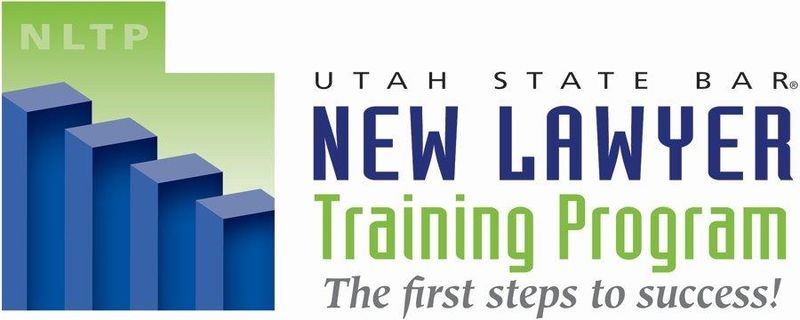About Us

New Lawyer Training Program - A Brief History
Utah State Bar
Several studies have attributed the lack of post-licensure mentoring to many problems confronting the legal profession. These problems include increased attrition in the profession, a decrease in professionalism and civility among members of the bar, and job dissatisfaction. According to studies, only one-third of associates remain at the firm where they started their legal career after five years. A lack of mentoring or misrepresentations regarding mentoring is cited by these associates as a key reason for leaving. Additionally, scholars and organizations have expressed concern regarding the lack of effective mentoring of new lawyers and the failure of law schools to provide sufficient practical experience during law school. See, e.g., ROY T. STUCKEY ET AL., BEST PRACTICES FOR LEGAL EDUCATION: A VISION AND A ROAD MAP (2007); WILLIAM M. SULLIVAN, ANNE COLBY, JUDITH WELCH WEGNER, LLOYD BOND & LEE S. SHULMAN, EDUCATING LAWYERS: PREPARATION FOR THE PRACTICE OF LAW (2007); IDA O. ABBOTT, DEVELOPING LEGAL TALENT: BEST PRACTICES IN PROFESSIONAL DEVELOPMENT FOR LAW FIRMS (2001); Karen Steinberger, Law Firm Mentoring: A Fresh Look at an Ancient Concept, ASSOCIATION OF LEGAL ADMINISTRATORS, ALA MANAGEMENT ENCYCLOPEDIA (2007).
In September 2005, the late Honorable Antonin Scalia (Justice of the Supreme Court of the United States), the Honorable Deanell R. Tacha (then Chief Judge of the United States Court of Appeals for the Tenth Circuit), and Alan Sullivan (managing partner of the Salt Lake City office of Snell and Wilmer), developed a discussion paper entitled, “A Brief Comparison of the Training and Accreditation of Lawyers in the United States and the United Kingdom” (Unpublished article, on file with the Bar). The discussion paper suggests that most new lawyers are not well prepared for the practical aspects of practicing law particularly since on-the-job training is not a condition of admission to the Bar. The discussion paper recognizes that while mentoring of new lawyers is crucial, the quality of mentoring is neither regulated nor coordinated by either the profession or law schools, with mentoring frequently an afterthought and rendered subordinate to billable hours and the demand to provide legal services. The paper was presented to the Utah appellate judges in spring 2006 and to the Bar Commission in early 2007. The discussion paper generated considerable dialogue between the Utah Supreme Court and Bar leadership.
As a result of these discussions, the Utah Supreme Court, through then Chief Justice Christine M. Durham, requested that the Bar Commission consider implementing a mentoring program to assist newly admitted lawyers during their first year of practice. In response, the New Lawyer Training Committee (NLTC) was formed to study the concept, evaluate mentoring programs in other states and to develop a proposal for Utah.
The NLTC and its subcommittees met periodically for about 18 months to develop the NLTP. During that time, a few states or bar organizations adopted mentoring programs. The NLTC reviewed most of the new lawyer mentoring programs in the United States, including the nation’s leading and most respected program, Georgia’s “Transition into Law Practice.” Members of the NLTC and key bar staff met with the director of Georgia’s mandatory mentoring program to obtain an understanding of the details and administration of its program. Additionally, members of the NLTC attended the “First National Conference on Mentoring” at the Center on Professionalism at the University of South Carolina School of Law. This conference resulted from a request by the Conference of Chief Judges of the United States.
The NLTC also studied Delaware’s Preceptorship Program which requires at least five months of training in the practice before licensing is allowed. The NLTC opted against a licensure requirement of this type and instead recommended mentoring during the first year of practice as a requirement for maintaining licensure.
Upon study and review of formal mentoring, the NLTP was presented to and adopted by the Bar Commission on July 16, 2008, and formally approved by the Utah Supreme Court on December 18, 2008. The Bar and the Supreme Court believe that effective implementation and administration of the NLTP will have a dramatic impact on current law practice. Mentoring not only includes training a new lawyer in the art of practicing law but also provides an opportunity for support, friendship, and sharing confidences. It is a place to vent problems and concerns without fear of recrimination, an opportunity to explore life and family balance, and the vehicle by which the enjoyment of law practice can be enhanced and the retention of good lawyers in the profession increased.

